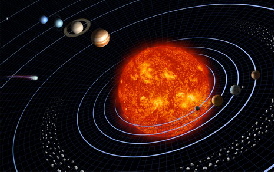From ellipses, let’s now turn to Kepler.
This is the beginning of celestial mechanics.
In simplest terms, celestial mechanics is the science describing the motions of the planets and other celestial bodies. Kepler first discovered the mathematics behind their motions.
Johannes Kepler was a German mathematician and astronomer who discovered that the Earth and planets travel about the sun in elliptical orbits. He gave three fundamental laws of planetary motion.
Kepler was the assistant to Tycho Brahe, a Danish nobleman who built an observatory on the Danish island of Hven, where he made the most accurate astronomical observations of his time. The mathematician Kepler gleaned his laws from a deep study of the astronomical data.
We briefly summarize his three laws here. We will see how Gauss used the second law in particular to find the orbit of the asteroid Ceres.

